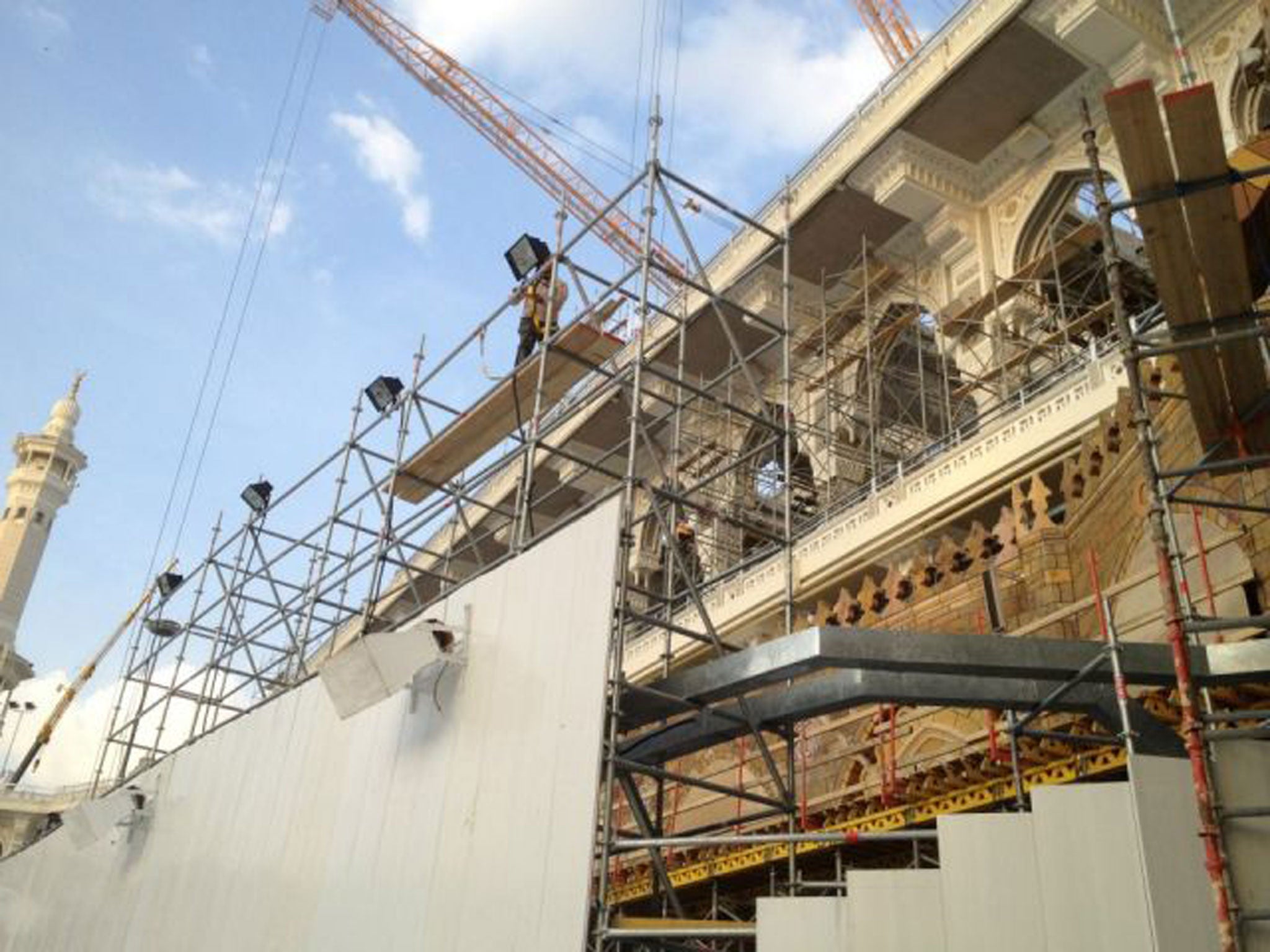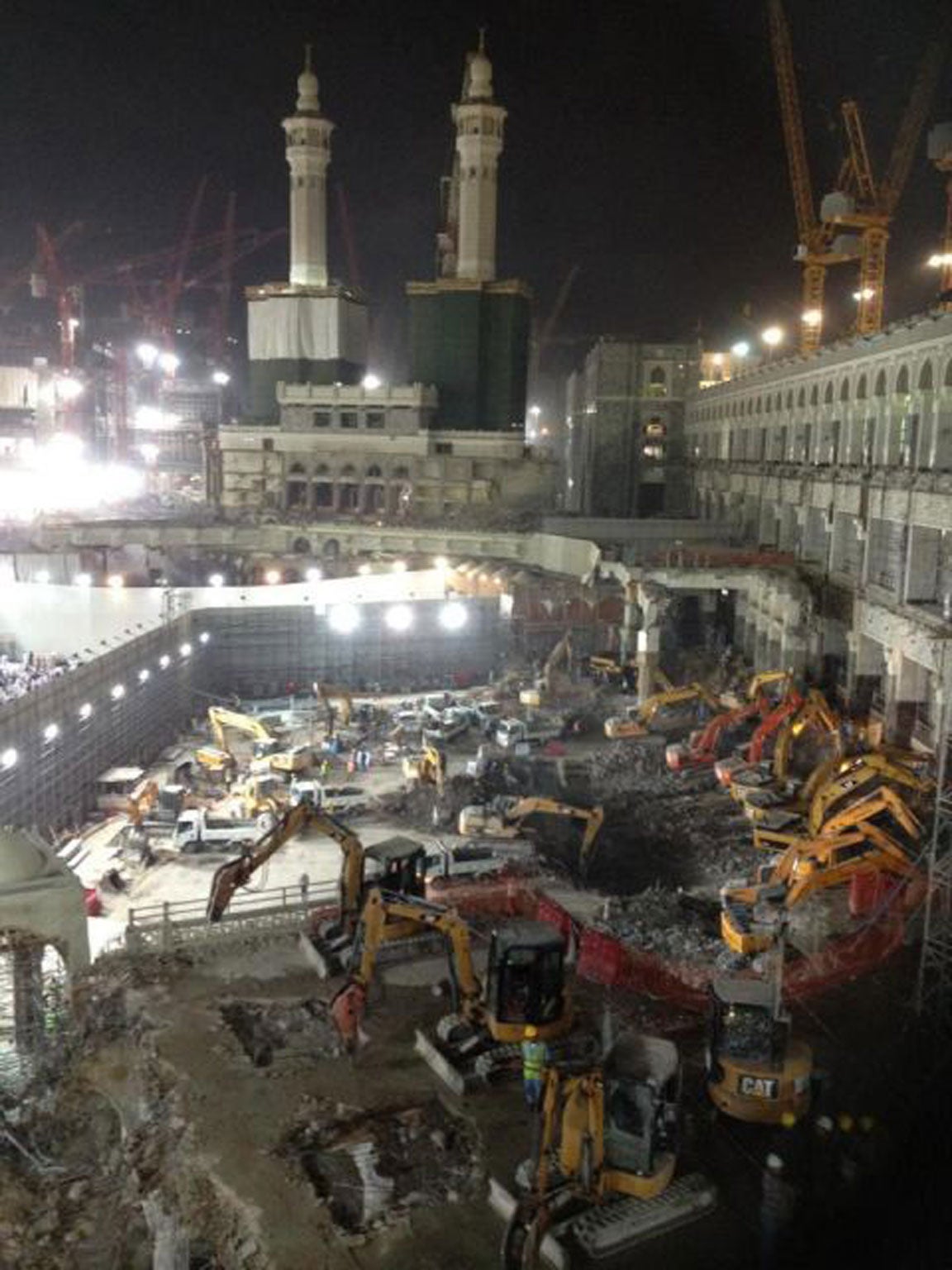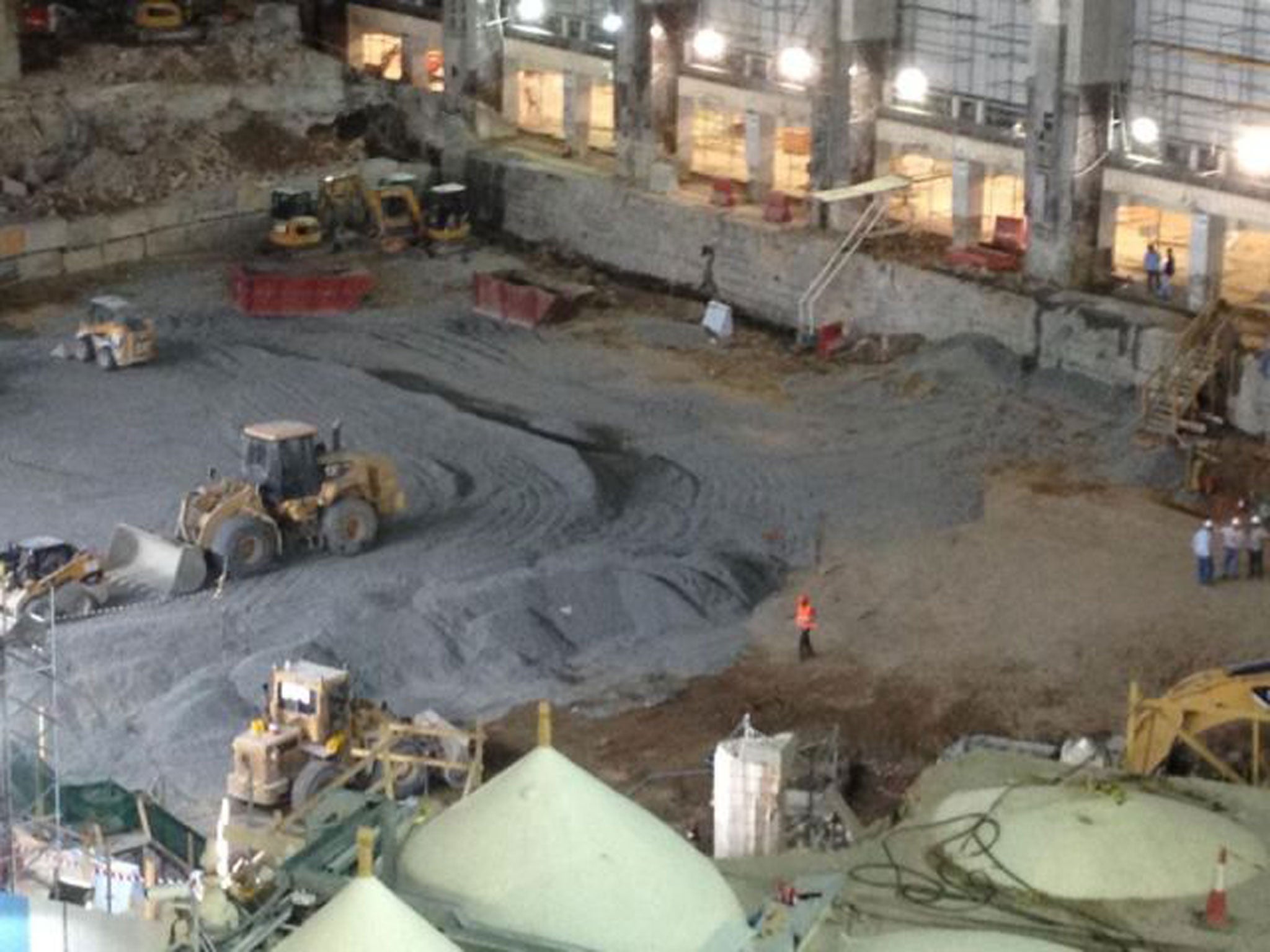The photos Saudi Arabia doesn't want seen – and proof Islam's most holy relics are being demolished in Mecca
Archaeologists fear billion-pound development has led to destruction of key historical sites

Your support helps us to tell the story
From reproductive rights to climate change to Big Tech, The Independent is on the ground when the story is developing. Whether it's investigating the financials of Elon Musk's pro-Trump PAC or producing our latest documentary, 'The A Word', which shines a light on the American women fighting for reproductive rights, we know how important it is to parse out the facts from the messaging.
At such a critical moment in US history, we need reporters on the ground. Your donation allows us to keep sending journalists to speak to both sides of the story.
The Independent is trusted by Americans across the entire political spectrum. And unlike many other quality news outlets, we choose not to lock Americans out of our reporting and analysis with paywalls. We believe quality journalism should be available to everyone, paid for by those who can afford it.
Your support makes all the difference.The authorities in Saudi Arabia have begun dismantling some of the oldest sections of Islam’s most important mosque as part of a highly controversial multi-billion pound expansion.
Photographs obtained by The Independent reveal how workers with drills and mechanical diggers have started demolishing some Ottoman and Abbasid sections on the eastern side of the Masjid al-Haram in Mecca.
The building, which is also known as the Grand Mosque, is the holiest site in Islam because it contains the Kaaba – the point to which all Muslims face when praying. The columns are the last remaining sections of the mosque which date back more than a few hundred years and form the inner perimeter on the outskirts of the white marble floor surrounding the Kaaba.
The new photos, taken over the last few weeks, have caused alarm among archaeologists and come as Prince Charles – a long-term supporter of preserving architectural heritage – flew into Saudi Arabia yesterday for a visit with the Duchess of Cornwall. The timing of his tour has been criticised by human rights campaigners after the Saudis shot seven men in public earlier this week despite major concerns about their trial and the fact that some of the men were juveniles at the time of their alleged crimes.

Many of the Ottoman and Abbasid columns in Mecca were inscribed with intricate Arabic calligraphy marking the names of the Prophet Muhammad’s companions and key moments in his life. One column which is believed to have been ripped down is supposed to mark the spot where Muslims believe Muhammad began his heavenly journey on a winged horse, which took him to Jerusalem and heaven in a single night.
To accommodate the ever increasing number of pilgrims heading to the twin holy cities of Mecca and Medina each year the Saudi authorities have embarked upon a massive expansion project. Billions of pounds have been poured in to increase the capacity of the Masjid al-Haram and the Masjid an-Nabawi in Medina which marks where Muhammad is buried. King Abdullah has put the prominent Wahabi cleric and imam of the Grand Mosque, Abdul Rahman al-Sudais, in charge of the expansion while the Saudi Binladin Group – one of the country’s largest firms – has won the construction contract.
While there is little disagreement over the need to expand, critics have accused the Saudi regime of wantonly disregarding the archaeological, historical and cultural heritage of Islam’s two holiest cities. In the last decade Mecca has been transformed from a dusty desert pilgrimage town into a gleaming metropolis of skyscrapers that tower over the Masjid al-Haram and are filled with a myriad of shopping malls, luxury apartments and five star hotels.
But such a transformation has come at a cost. The Washington-based Gulf Institute estimates that 95 per cent of Mecca's millennium-old buildings have been demolished in the past two decades alone. Dozens of key historical sites dating back to the birth of Islam have already been lost and there is a scramble among archaeologists and academics to try and encourage the authorities to preserve what little remains.
Many senior Wahabis are vehemently against the preservation of historical Islamic sites that are linked to the prophet because they believe it encourages shirk – the sin of idol worshipping.
But Dr Irfan al-Alawi, executive director of the Islamic Heritage Research Foundation which obtained the new photographs from inside the Grand Mosque, says the removal of the Ottoman and Abbasid columns will leave future generations of Muslims ignorant of their significance.
“It matters because many of these columns signified certain areas of the mosque where the Prophet sat and prayed,” he said. “ The historical record is being deleted. A new Muslim would never have a clue because there’s nothing marking these locations now. There are ways you could expand Mecca and Medina while protecting the historical heritage of the mosque itself and the surrounding sites.”

There are signs that King Abdullah has listened to concerns about the historical destruction of Mecca and Medina. Last October The Independent revealed how new plans for the masjid an-Nabawi in Medina would result in the destruction of three of the world’s oldest mosques on the west hand side of the main complex. However new plans approved by King Abdullah last week appear to show a change of heart with the bulk of the expansion now slated to take place to the north of the Masjid an-Nabawi.
However key sites are still at risk. The Independent has obtained a presentation used by the Saudis to illustrate how the expansion of Mecca’s main mosque will look. In one of the slides it is clear that the Bayt al-Mawlid, an area which is believed to be the house where Muhammad was born in, will have to be removed unless plans change.
The Independent asked the Saudi Embassy in London a number of questions about the expansion plans and why more was not being done to preserve key historical sites. They replied: “Thank you for calling, but no comment.”
Further reading
Mecca for the rich: Islam's holiest site 'turning into Vegas'
Why don't more Muslims speak out against the wanton destruction of Mecca's holy sites?
Medina: Saudis take a bulldozer to Islam's history
Join our commenting forum
Join thought-provoking conversations, follow other Independent readers and see their replies
0Comments